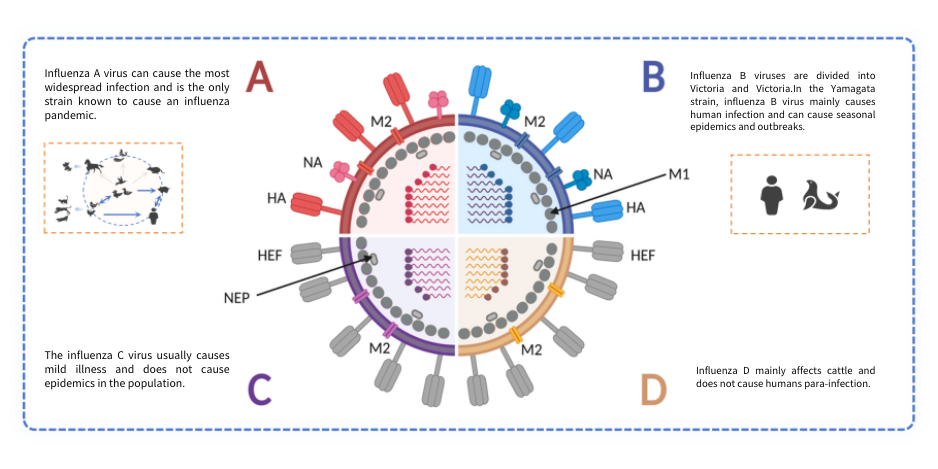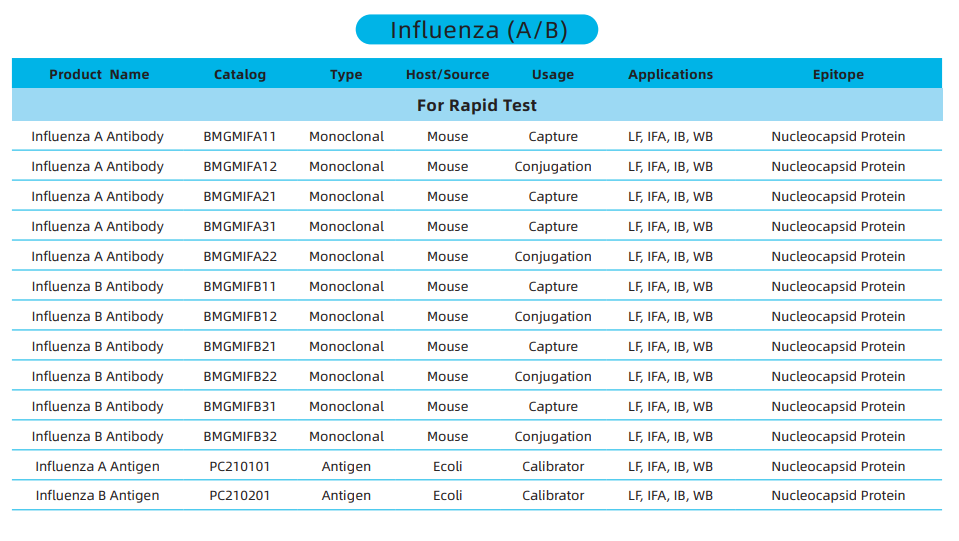Influenza virus is a single negative strand segmented RNA virus, according to its matrix protein (M) and nuclear protein (NP), it can be divided into four subtypes: A, B, C and D.
Among them, influenza A and B viruses appear seasonal epidemics every year.

At the beginning of the winter of 2023, the number of flu patients around the world has risen sharply, heralding the arrival of a new flu season.
1.Influenza B is often overlooked because its clinical symptoms are similar to those of other types of influenza viruses.
The clinical symptoms of influenza B are very similar to those of influenza A, including fever, cough and headache.
However, some patients often present with atypical digestive symptoms, such as nausea, vomiting, abdominal pain, and diarrhea, sometimes accompanied by calf muscle pain.
Therefore, compared with influenza A, influenza B is more likely to be misdiagnosed or missed, which leads to delayed clinical management and affects the prognosis of patients.
2.Although influenza B is similar to influenza A in clinical symptoms, it also poses a deadly threat.
First, influenza B can also lead to local outbreaks. For example, there was a influenza B pandemic in the United States in 2020, which is considered to be one of the deadliest flu outbreaks in the past 40 years. A children’s hospital reported a total of 1,268 cases of influenza B in 2019-2020.
Second, influenza B affects children more and has a worse prognosis. According to the 2004-2013 influenza season surveillance data in Canada, the incidence of influenza B among children aged 5-9 years and 10-16 years was 26.6% and 14%, respectively, higher than the incidence of influenza A (15.3% and 8.4%). Further analysis showed that the risk of acute encephalopathy in children with influenza B was similar to that of children with influenza A, but the risk of myocarditis in children with influenza B was much higher than that in children with influenza A (6.7% vs 0.7%). In addition, children with influenza B also had a higher risk of death than children with influenza A (1.4% vs 0.4%).

It appears that although the proportion of children with influenza B is relatively low, it often leads to delayed clinical management due to its atypical symptoms.
In addition, the prognosis for children with influenza B is relatively poor compared with influenza A.
Therefore, during the flu season, we should pay attention to the challenges posed by influenza B infection; The selection of appropriate antiviral therapy is crucial to improve the prognosis of children.
Product recommendation




Influenza A Antibody Influenza B Antibody Influenza A Antigen Influenza B Antigen

If necessary, please contact me for more information.






